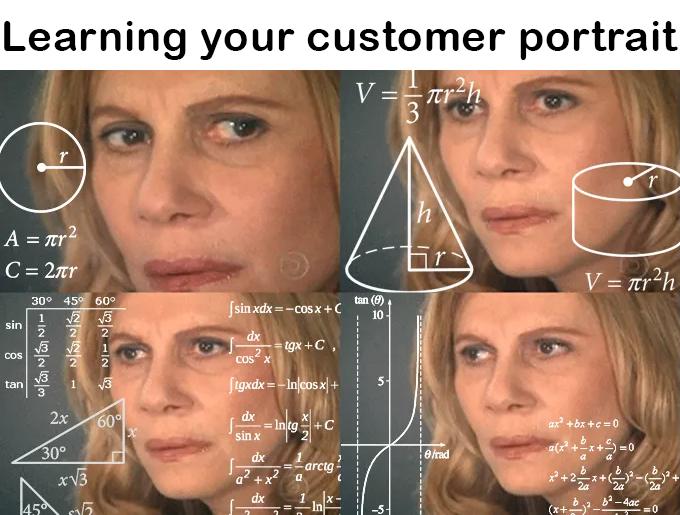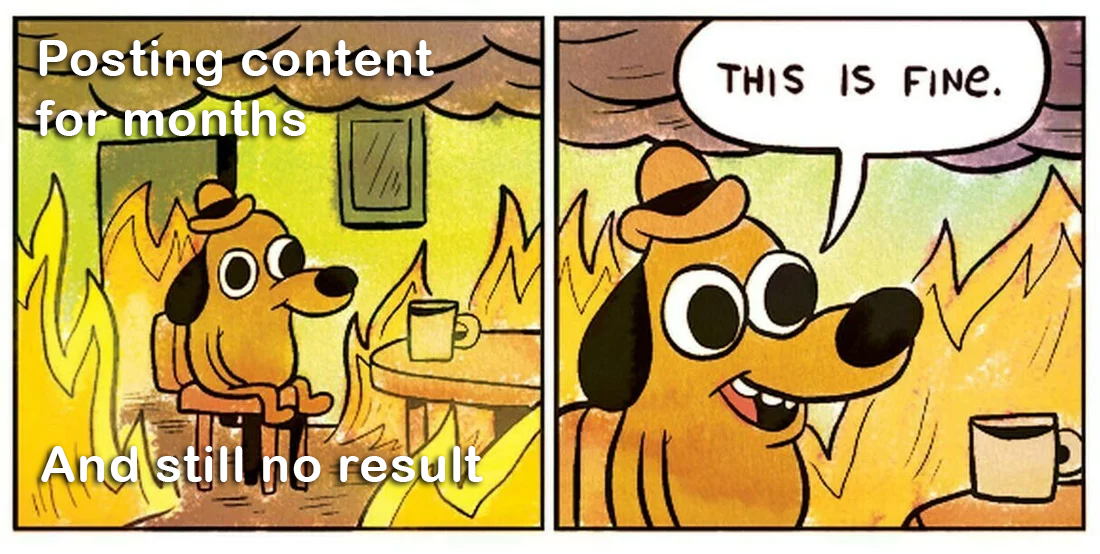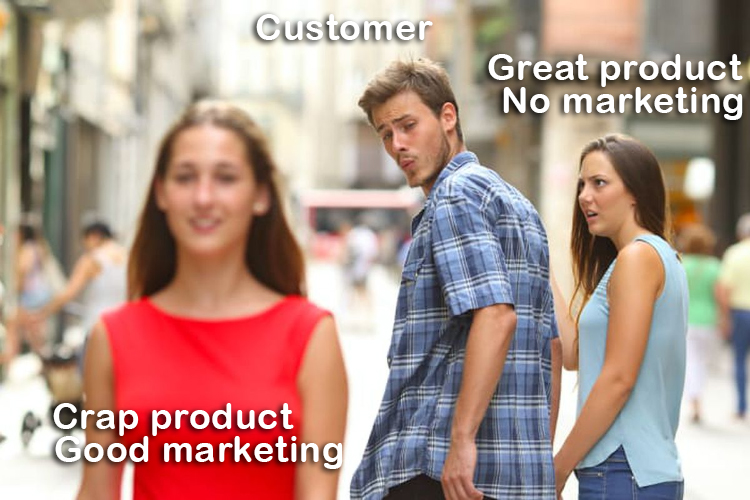Marketing for dummies
Success and sales
What is success? What does success mean to you? What about your friends? Have you ever tried answering that question? Is it deeply personal, or is there a one-size-fits-all answer that applies to everyone? Sure, it sounds like an abstract question, but I like to cut to the chase, so let's simplify it a bit.
Take a look around. Celebrities dream of large audiences. Olympic athletes want that gold medal. Companies chase big profits. You, well, I'm sure, you aspire to wealth and prosperity. At first glance, success looks different for everyone, but is it really? You probably noticed there is something in common: achieving the goals. The desire is the same; the goals, context, and wishes just differ.

Now let’s talk about sales. What’s success in sales? It’s pretty simple: a deal. You sell something, you make money—that’s it. But how do you sell? Many of you probably think that selling means you need to own something first. Well, that's only half true. Actually, it’s even more wrong than right. You could have the coolest product ever, but without customers, it's worthless. You can pour your heart into it, work endless hours, hire teams of people, but its value is only measured by how many people actually buy it. Sounds like a paradox, right? Especially for those coming from a worker background. I used to think that way too. Heck, I even wrote an article about my failed MVP. Don’t repeat my mistakes. In sales, success is all about who buys your product—your customer, your client, your buyer.
How marketing works
To be successful in sales, you need a customer. That’s your first step. So how do you get one? You could go searching, which is pretty tedious, or you could use marketing to bring the customer to you. Sounds way better, right?
Marketing is the tool that lets you promote anything—literally anything. You can sell a product and become a big-time entrepreneur. You can sell ideas and become a famous author. You can sell a political agenda and become president.
What’s the formula for marketing success? It’s simple:
- WHO is your customer?
- WHERE is your customer?
- HOW do you attract your customer?
- WHAT can you sell to your customer?
Let’s break it down.
Who is your customer?

"Customer" is a pretty generic term. It could be someone watching your YouTube or TikTok videos, reading your blog, or listening to your Spotify podcast. In marketing, we call this your target audience. There’s something known as a "target audience portrait", which is about knowing as much as possible about your followers—age, location, habits, education, hobbies. Yeah, it sounds overwhelming, but don’t worry, you’re not supposed to spy on people. The point is to understand what traits your audience has so you can sell to them. Smokers buy cigarettes, geeks buy gaming PCs, gamblers... well, they buy crypto. (Just kidding. 😅 I’m into that stuff too.) Anyway, you get the idea: know who you’re talking to.
Where is your customer?
We all live on social media, but not the same ones. Some scroll Reddit, others hang out on Telegram, and then there’s the "doomscrollers" on TikTok or Instagram. Where people spend their time depends on factors like age, country, interests, and habits. That’s a huge clue for marketing. If you’re promoting in China, WeChat’s the way to go. In Ukraine? Telegram. In the U.S.? SnapChat. It’s simplified, of course, and trends shift fast, but you get the point—platform choice is key.
Marketing strategies
How do you attract customers? You need to know how to grab their attention. Lucky for you, there are just three main strategies, each with its pros and cons.
- Organic Content
- Paid Promotion
- Integration
Organic content

This is what you post on your platform of choice—blog posts, shorts, videos, even a LinkedIn profile. It brings in quality traffic, but it’s slow and takes effort to create. It’s a long game. You won’t see instant results, but if you consistent enough, it’s super effective.
Organic content relies on two tools:
- Search: You search Google for a website, YouTube for videos, or LinkedIn for talent.
- Feed: Google recommends sites and news, YouTube serves up trending videos, and LinkedIn shows suggestions based on your network and profile.
Paid promotion
This is where you pay the platform to promote your content. Google Ads, Instagram Ads, YouTube’s promotion program—it’s a fast way to get customers. It’s also a very effective way, which is why Affiliate Marketing exists. Setting it up is easy once you learn the platform, but it’s not free. And the quality of traffic depends on how well you set up your target audience, which takes practice.
Integration
This is the king of traffic. Let’s say your favorite blogger has an audience that fits your product’s target market. That’s a winning bet. Make a deal, and they’ll post about your product or create a video. You’ll see results fast. It’s a great way to get relevant, high-quality traffic, but it’s pricey and requires networking to connect with influencers.
Market orientation
What can you sell to your customer?
If you don’t have a product yet, it’s no big deal. If you’re building a startup, answering the WHO, WHERE, and HOW questions will guide you to the right product. So your thinking should be "WHO -> WHERE -> HOW -> WHAT."
If you already have a product or work as a marketing manager, things are a bit trickier. In this case, the WHO, WHERE, and HOW depend on your WHAT. You’re a bit more limited in tools and audience. So now your thinking should be "WHAT -> WHO -> WHERE -> HOW."

Marketing is the tool that will drive your sales and beyond. It’s your personal brand, your dream job, your startup, your financial freedom. Remember... or you will forget. A great product means nothing with bad marketing. No one will even know it exists. But a bad product with good marketing? Wow, now that definitely looks like a winning combo!